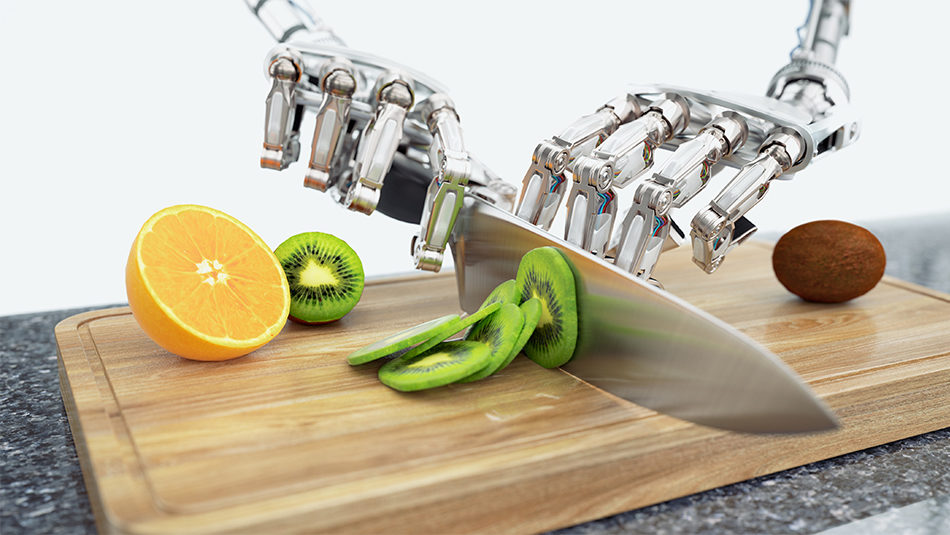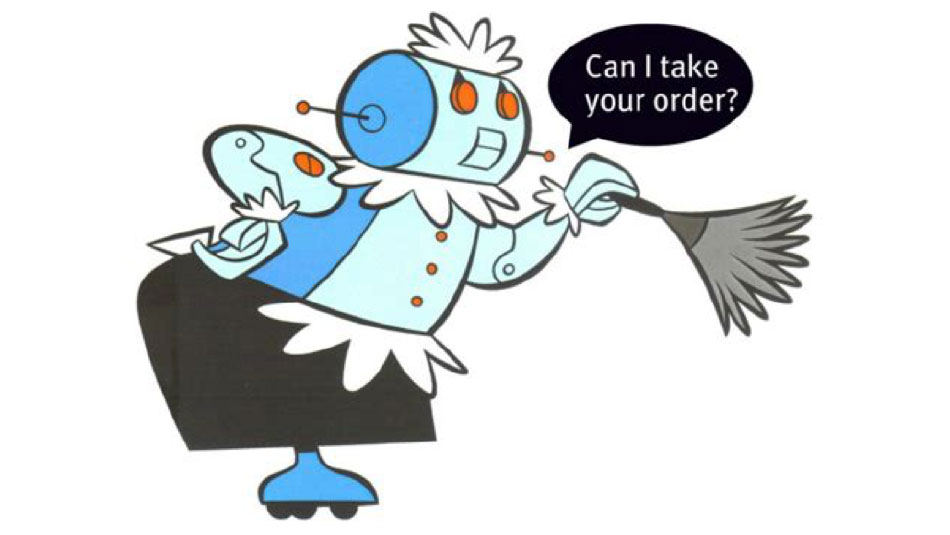
New Foodservice Technology You Have to See to Believe
From mobile delivery to robotics to self-serve kiosks to cashless dining, automation and mechanization are changing the way foodservice professionals work across the front and back of house. As technology and artificial intelligence (AI) creep into more and more applications within the mainstream foodservice space, it’s clear to see the future of the restaurant world is here. As food marketers, this presents new and exciting ways to attract more customers and give them what they’re craving – an unforgettable brand experience.
 There’s a Robot in my Kitchen
There’s a Robot in my Kitchen
You probably never thought the idea of Rosie from the 60’s TV Show “The Jetsons” could actually happen in your lifetime. But here she is, in many versions, hard at work in the kitchen and out on the floor. Robotics are transforming the restaurant experience for staff and customers alike. And several cutting-edge foodservice outlets are already putting it to the test to improve efficiency and the customer experience like never before.
Bear Robotics, based in Sunnyvale, California has introduced a robot called “Penny” that can take over “monotonous” dining room tasks such as delivering water or the check. Penny moves around the dining room like an iRobot vacuum on a pedestal and can be controlled through a touchscreen tablet. She can even say “excuse me” in a crowded restaurant space. Penny is currently being used by Pizza Hut restaurants in Seoul, Korea, and Amici’s East Coast Pizzeria in the Bay Area. John Ha, founder and chief executive officer of Bear Robotics says, “The machine is not intended to replace employees but rather to enhance customer service and interaction. We aren’t looking to eliminate the human touch in a restaurant. No one wants to dine in a factory.”
 Another robotic manufacturer, Chowbotics, Inc., has created a machine named “Sally” that uses 21 different ingredients to create more than 1,000 types of salads in 60 seconds. With improved food safety compared to a traditional salad bar, consumers can have a personalize salad with a touch of a screen. CEO and Founder Dr. Deepak Sekar states, “We are currently testing this streamlined machine in busy locations like colleges, airports, hospitals, and convenience stores. It helps bridge the need for fresh and healthy grab-n-go options.”
Another robotic manufacturer, Chowbotics, Inc., has created a machine named “Sally” that uses 21 different ingredients to create more than 1,000 types of salads in 60 seconds. With improved food safety compared to a traditional salad bar, consumers can have a personalize salad with a touch of a screen. CEO and Founder Dr. Deepak Sekar states, “We are currently testing this streamlined machine in busy locations like colleges, airports, hospitals, and convenience stores. It helps bridge the need for fresh and healthy grab-n-go options.”
 Online-only pizza delivery company, Zume Pizza, out of Mountain View, CA has patented it’s unique “baked-on-the-way” delivery trucks that can bake up to 120 pizzas per hour – all on the road to the customer. Each 29-foot truck is equipped with robots to make the pies, six programmed ovens, a refrigerator, compressed air, water, and electricity all powered by a diesel generator. The startup has changed the pizza game forever. And, just last week, they have received attention from major investors who are looking to increase their fleet and potentially bring their proprietary supply chain technology to other food partners.
Online-only pizza delivery company, Zume Pizza, out of Mountain View, CA has patented it’s unique “baked-on-the-way” delivery trucks that can bake up to 120 pizzas per hour – all on the road to the customer. Each 29-foot truck is equipped with robots to make the pies, six programmed ovens, a refrigerator, compressed air, water, and electricity all powered by a diesel generator. The startup has changed the pizza game forever. And, just last week, they have received attention from major investors who are looking to increase their fleet and potentially bring their proprietary supply chain technology to other food partners.
We’re even beginning to see robots behind the bar. Los Angeles-based Somabar has debuted a machine that can crank out a mixed drink every 10 seconds, and can be programmed to make up to more than 300 types of cocktails and drinks. The touchscreen system can be operated by servers to save time on a busy night, rather than waiting for the bartender.
The Automated Foodservice Path-to-Purchase
Starbucks was an early adopter of mobile ordering and pay-ahead technology, and now consumers can’t imagine life without their latte waiting for them at the pickup counter. Soon, companies of all sizes will be expected to keep pace with the demands of hyper-connected consumers. Popular online ordering apps like UberEats or Postmates have contributed to decreasing sales for many quick-service restaurants in the past few years. As a result, QSR operators are being pushed to evolve as mobile ordering becomes the new norm.
Apex, a company that specializes in automated point-of-use dispensing is currently taking QSR next level. At the 2018 NRA Show, they displayed their new hot and cold pickup lockers. These lockers allow diners to pick up their food from a compartment, or locker, using a unique pick up code after they order online or through the app. Restaurants like White Castle and Little Caesar’s Pizza have already installed the Apex program and are seeing positive growth thus far. It gives busy take-away customers what they want most – quick carryout with no lines.
 Another intriguing new foodservice technology is self-order kiosks with facial recognition capabilities. Cali Group, a retail technology holding company, is currently testing this at CaliBurger restaurant in Pasadena, California. Guests can walk up to a kiosk, quickly pull up their past ordering history, and even pay with just their face. Let’s just hope you’re not having a bad make-up day, or you might get the wrong order.
Another intriguing new foodservice technology is self-order kiosks with facial recognition capabilities. Cali Group, a retail technology holding company, is currently testing this at CaliBurger restaurant in Pasadena, California. Guests can walk up to a kiosk, quickly pull up their past ordering history, and even pay with just their face. Let’s just hope you’re not having a bad make-up day, or you might get the wrong order.
Human-Power Fuels the Future of Foodservice Tech
As we have seen in recent years, technology has become a key ingredient to success of the modern-day foodservice industry. In this day and age, simply having good food is just not enough to keep a restaurant in business.
Most consumers agree, foodservice technology helps contribute to speedier service, improved order accuracy, and a better overall customer experience. Businesses that invest in innovation have more marketable brands with an advantage in customer retention. But even though artificial intelligence and other technology may be paving the way for the future direction of foodservice, the human touch of skilled chefs, servers, and other foodservice professionals will still rule the roost for many years to come.







